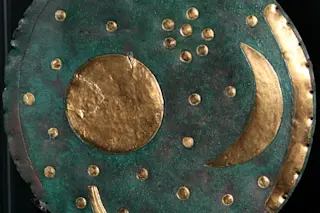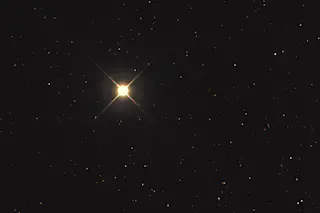The Nebra Sky Disk is marvelous looking piece of art, no matter what its intention was. The circular copper plate is about 12 inches in diameter — about the size of a medium pizza. Only rather than pepperoni, the millennia-old disk contains inlaid circles and crescents representing stars, the moon and possibly the sun, with a series of stars dotted around them.
The disk has a number of different interpretations, with some people believing it represents the oldest sky map ever found, dating as far back as 1600 B.C.
“The Nebra Sky Disc is one of the most important archaeological finds of the past century,” write a team of researchers led by Ernst Pernicka in a paper published in the journal Archaeologia Austriaca. “It displays the world’s earliest known concrete representation of astronomical phenomena.”
But other archaeologists question the provenance of the disk, believing it may not be that old. ...















